
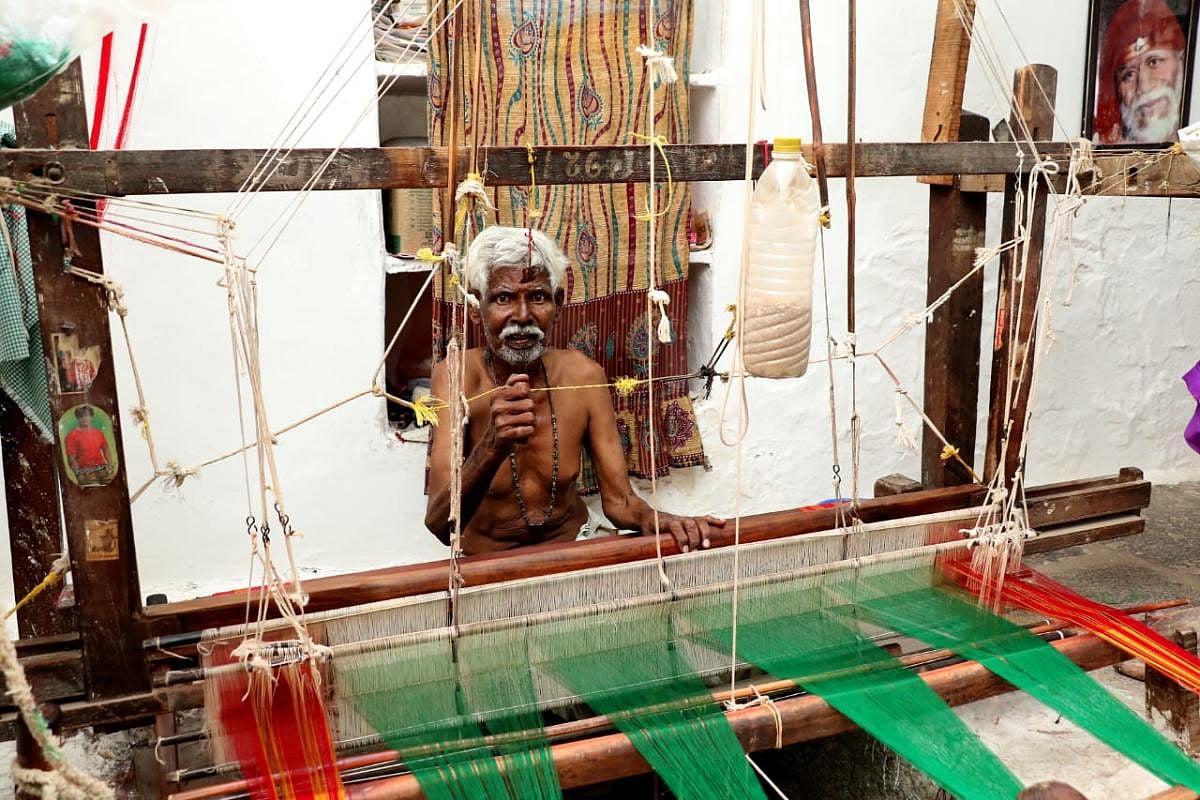

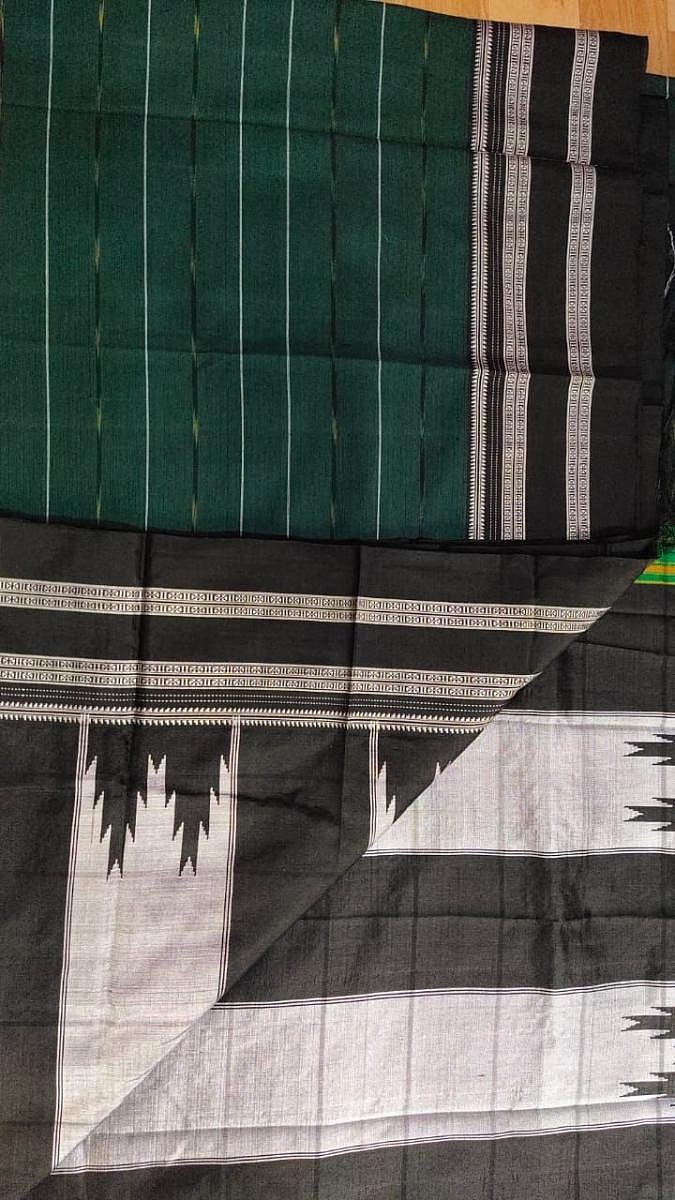
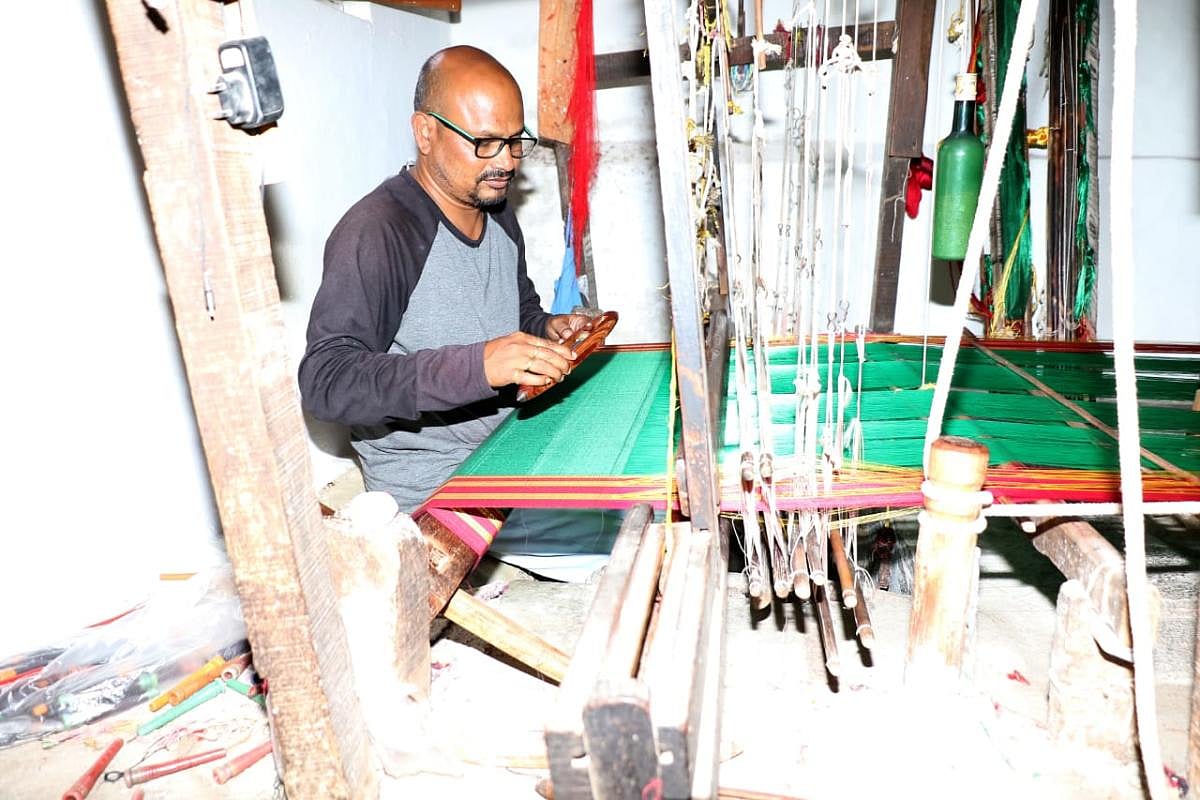
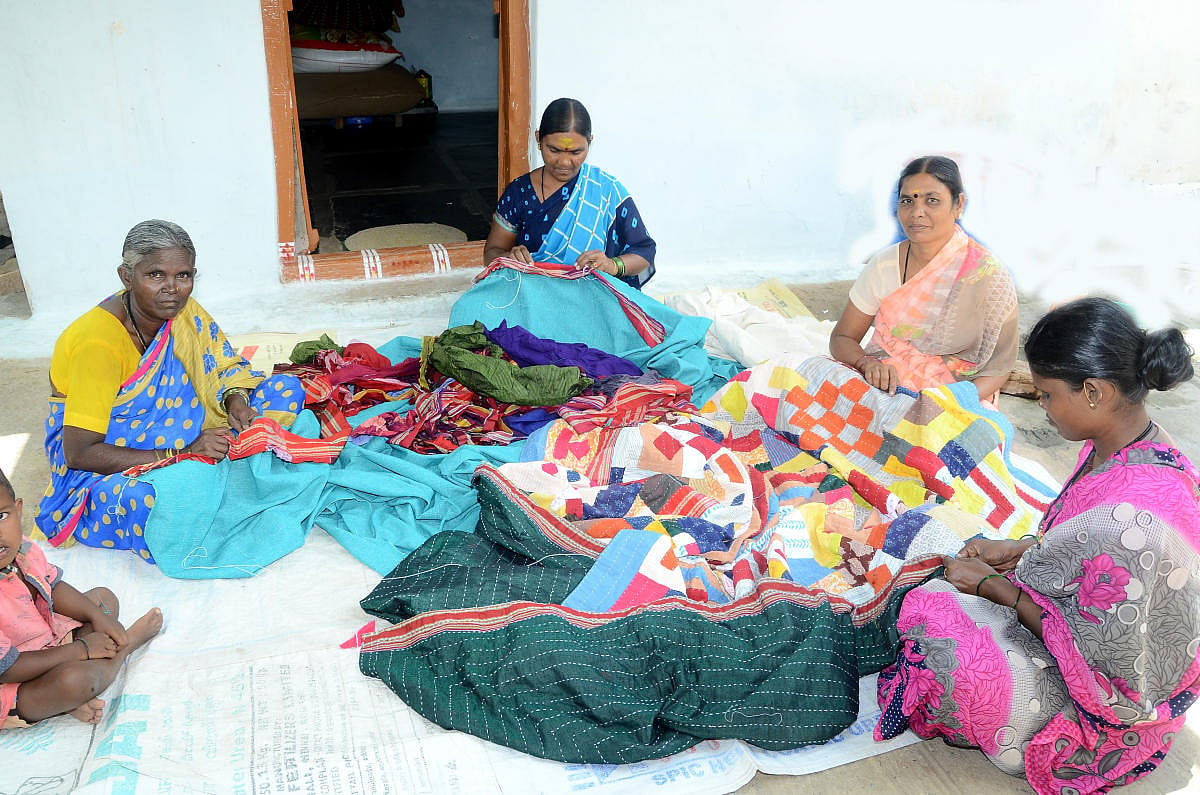
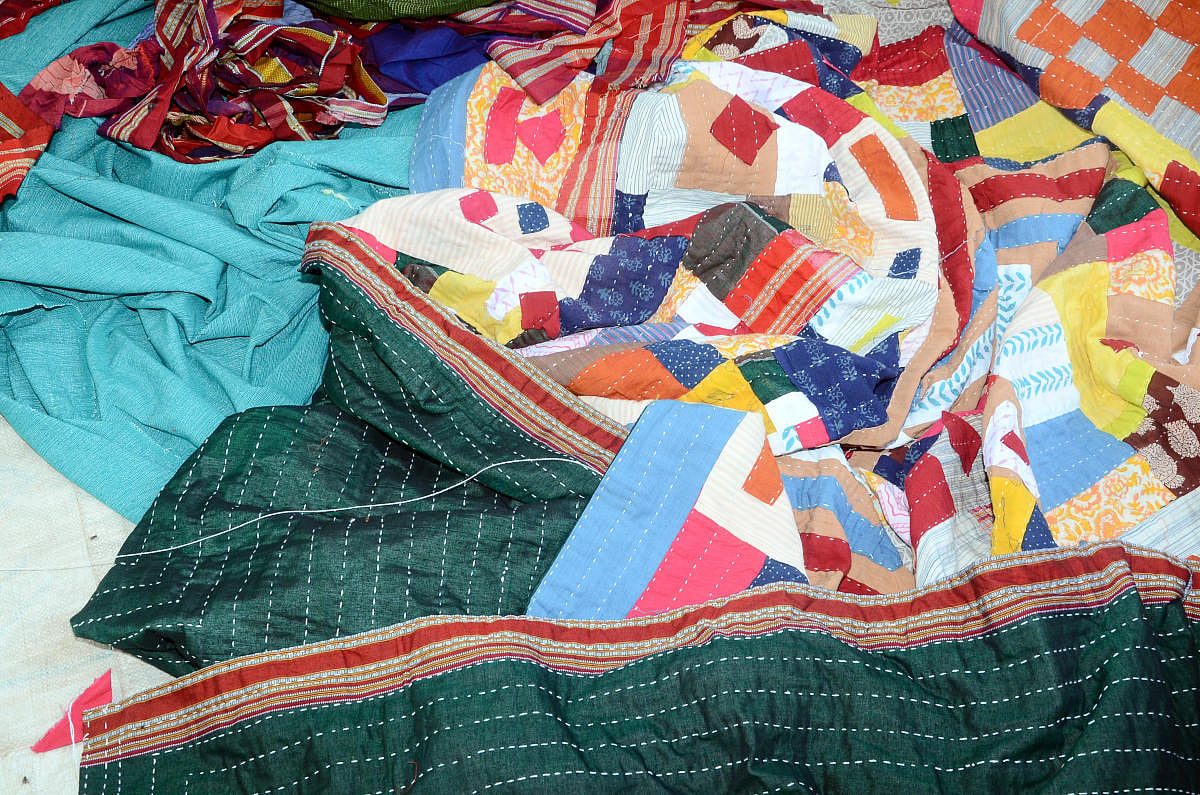
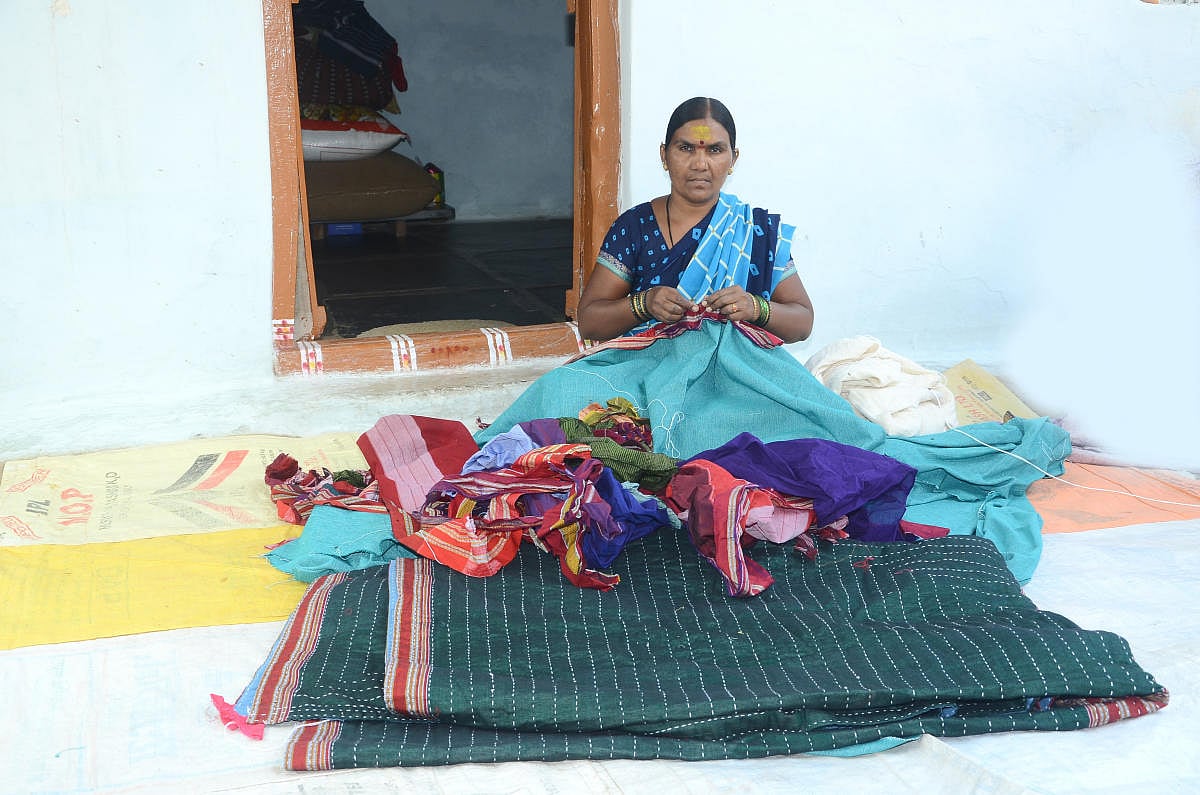
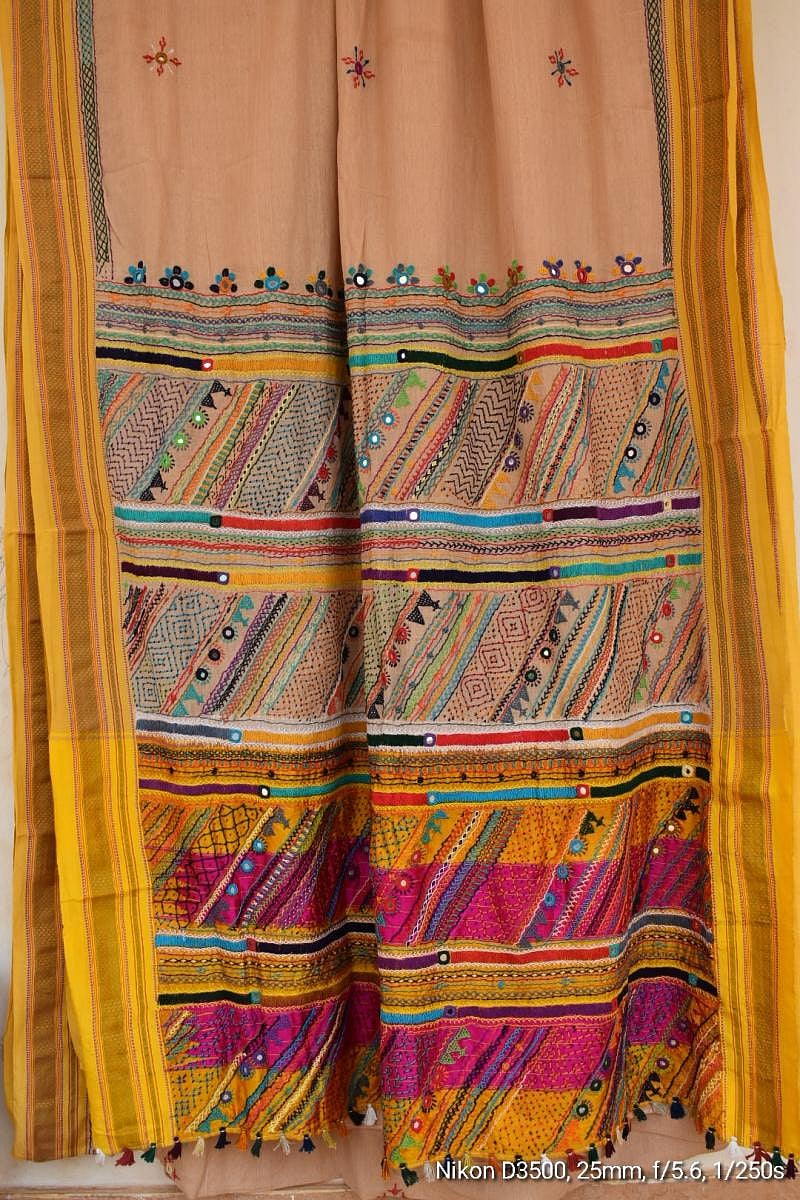
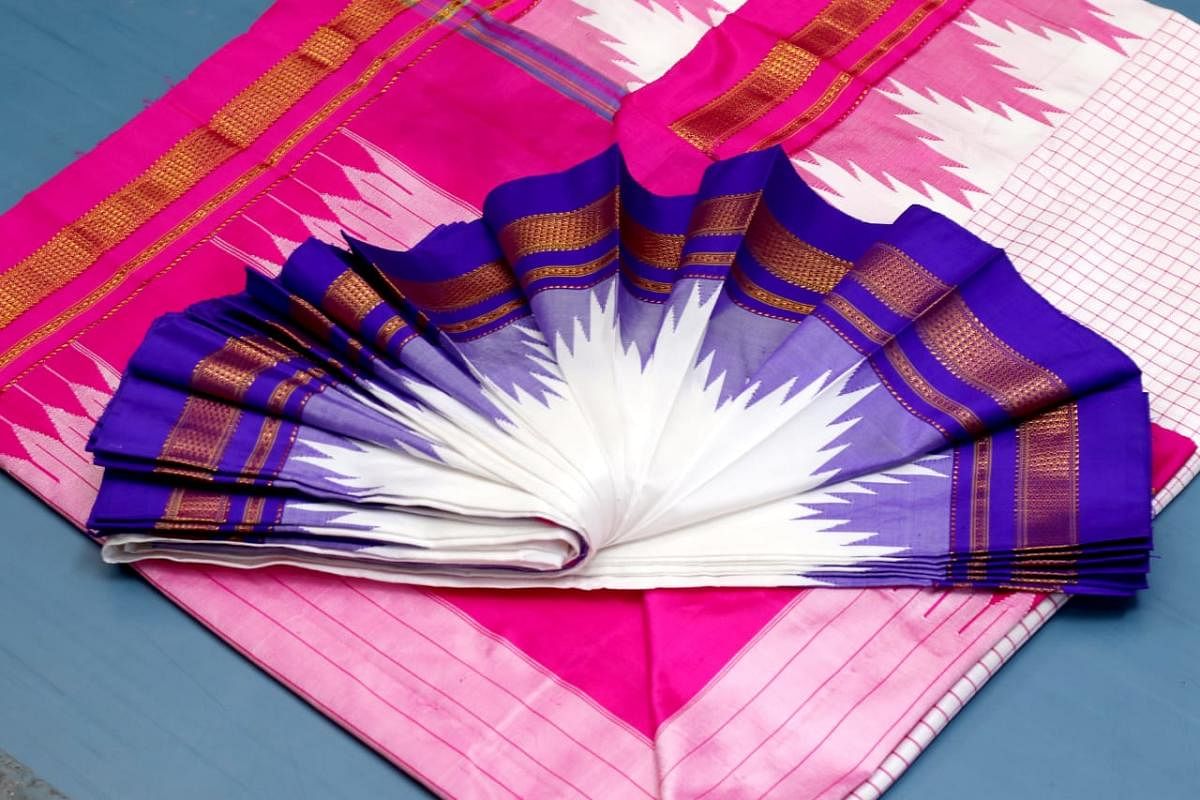
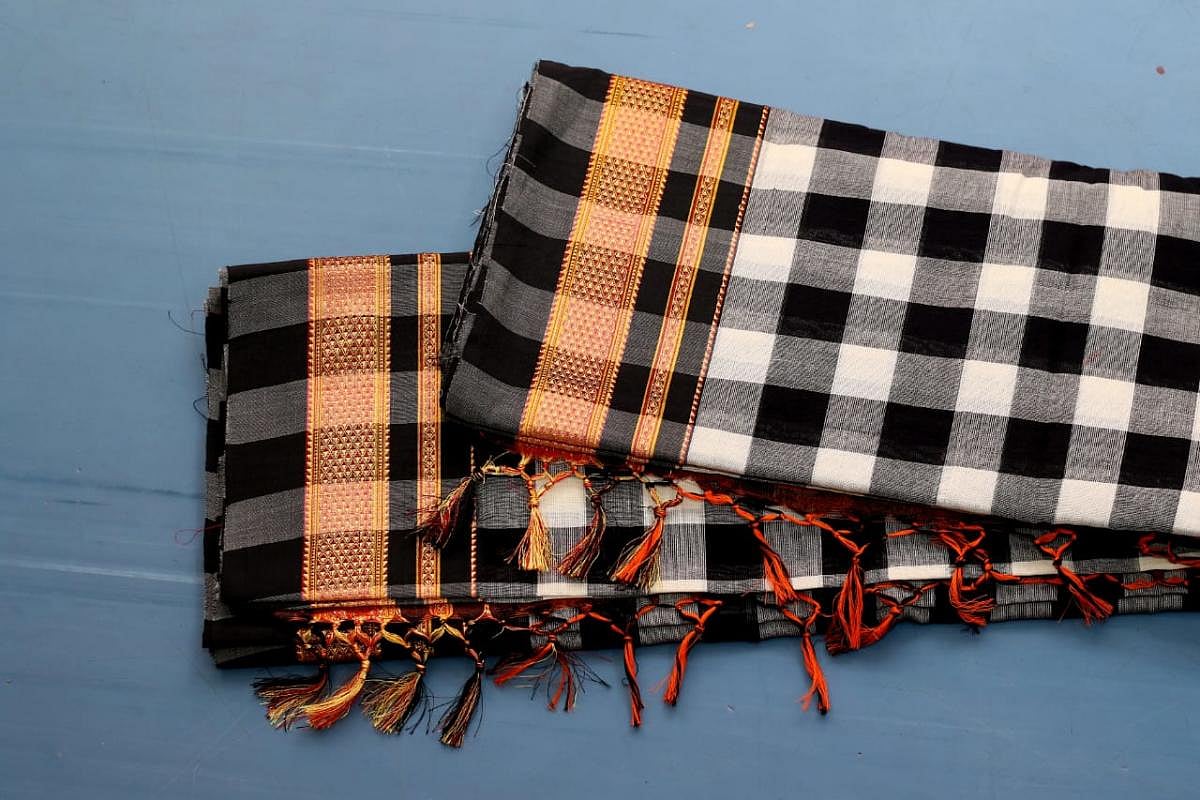
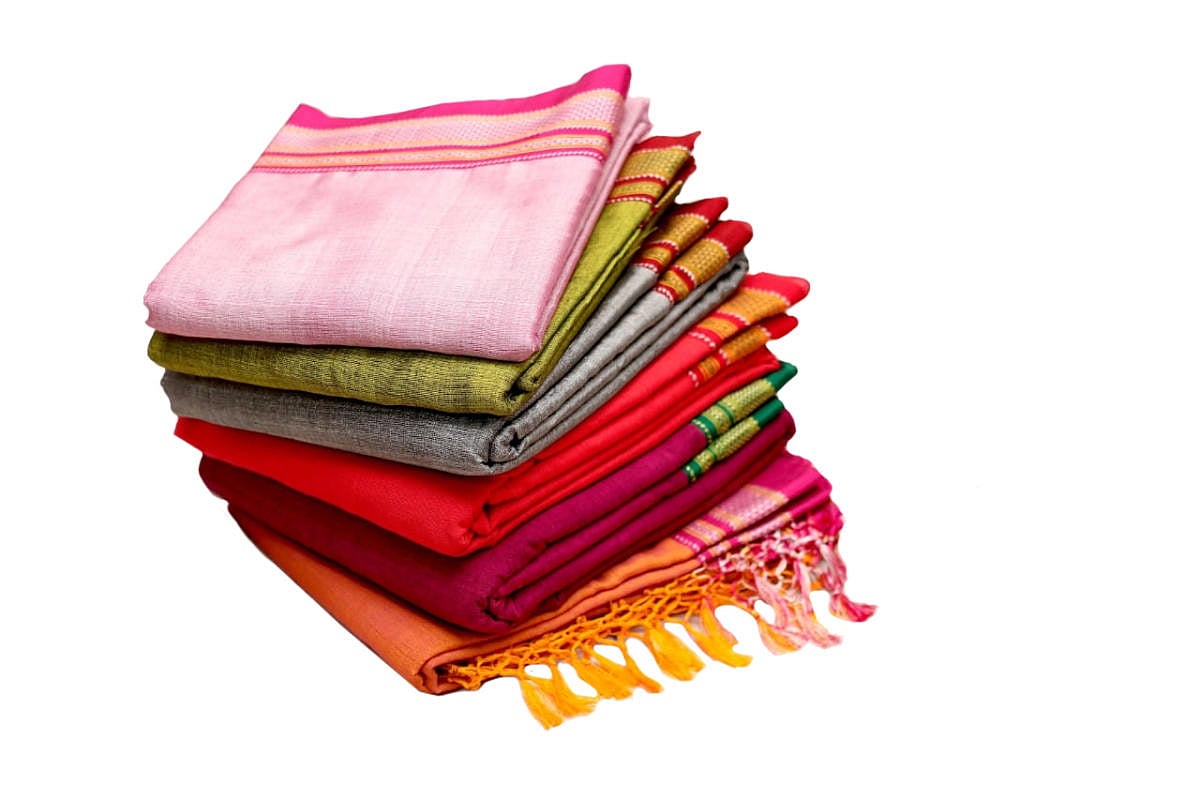
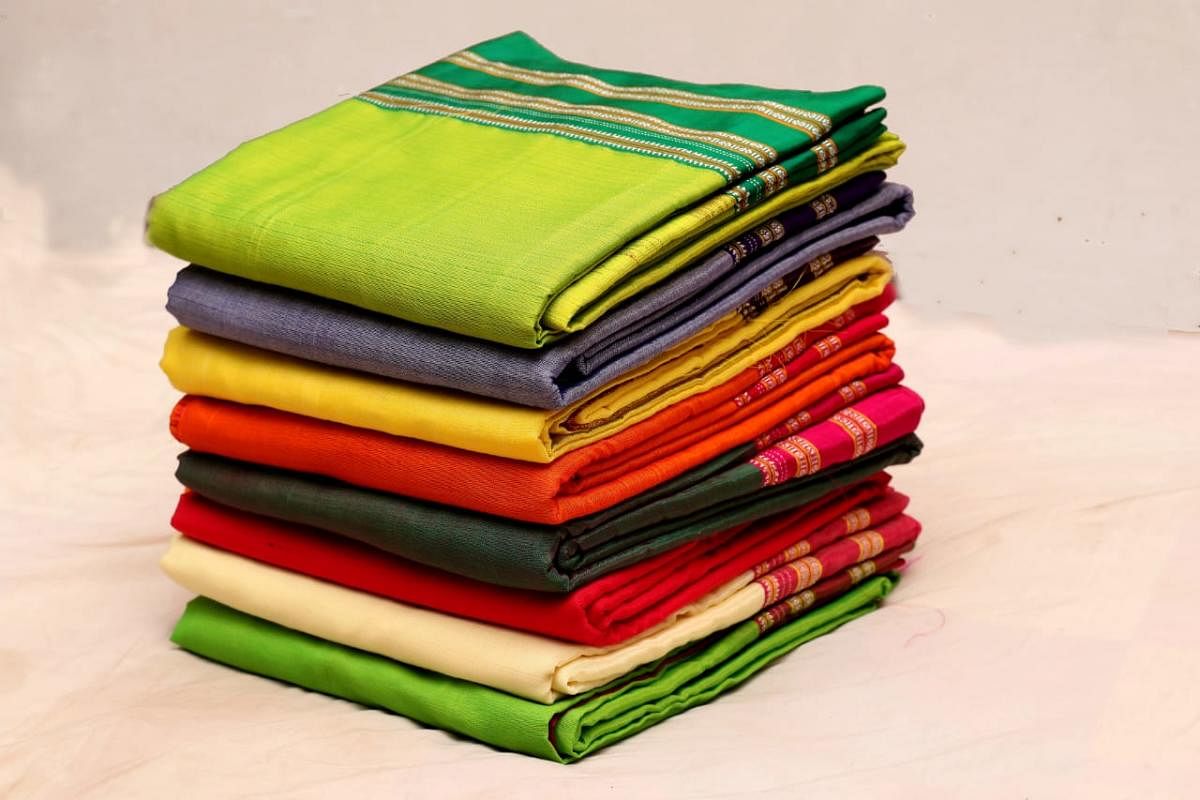
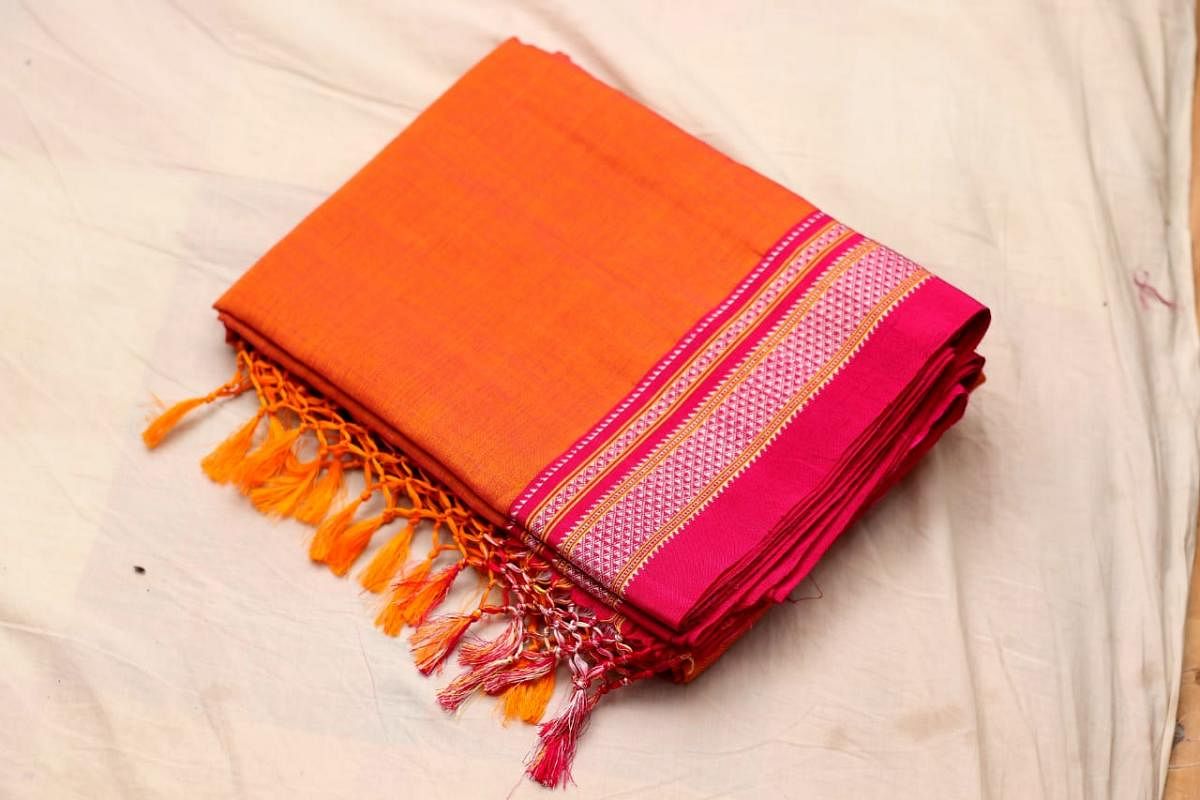
In the chaotically colourful lanes of Ilkal, Kamatagi, Sulebhavi, Amingad and other places in Bagalkot district, the distinctive Ilkal handloom saree industry, said to be active from the eighth century, is undergoing a quiet transformation.
Ilkal sarees with their signature red pallu are a prized possession of every other woman in North Karnataka and southern Maharashtra. However, demand had begun dying out as the number of powerlooms increased. Though cheaper, many traditional designs unique to Ilkal were not possible with powerlooms. Price and design comparison waned consumer interest and eventually market declined.
But thanks to a few revival efforts led by traditional weavers, Ilkal sarees are making a comeback.
As per handloom experts, on an average, a single weaving cluster used to sell about 400-450 sarees per month but in the period just before Covid, it peaked with clusters weaving and selling about 1,500-2,000 sarees a month.
A perfect blend
The credit for this renewed appeal goes to innovation in terms of colour palette, patterns, products and marketing strategies. As a result, this Queen of Weaves from the Deccan Plateau adopted a contemporary look while also keeping its old charm intact.
Take the instance of weaver Shrikanth Guled, 43, who was working under a Saahukar (master weaver) in Ilkal. Demonetisation hit him badly like many others, and he decided to start his own venture.
“In spite of intensive labour, the wages we got were not satisfactory as the handloom sector got lesser financial assistance from the government. Also, there was no creative satisfaction. Weaving is the only skill I knew and so, with the help of a friend, I purchased a few looms and began weaving. Once the sarees were ready, we took it to shops only to be rejected as there was nothing new,” recalls Shrikanth.
In days to come, Shrikanth connected with handloom experts like Vrunda Sekhar who helped him decode the taste of current-generation women. He conducted several experiments and came up with exclusive cotton Ilkal sarees.
For generations, while the body of the Ilkal sarees used to be made of silk or cotton, only silk or art silk was used for the border and pallu. Shrikanth replaced silk with cotton and made the saree affordable. The comfort it provided drew the attention of curious fashion designers. While pure silk sarees start from Rs 10,000, full cotton sarees cost between Rs 1,200 and Rs 2,000. He also experimented with colours that were not traditionally used on Ilkal sarees.
Five years have passed and Shrikanth today owns 70 looms.
Innovation and revival
Traditionally, Ilkal had about 30 designs and just five major colours — green, yellow, grey, pink and black with a red border and pallu with three thick bands in red and two in white. The pallu and the body are joined using a technique called kondi and the silk pallu worn on the head during occasions had tope-teni design.
But in recent times, the designs had come down to just five to six as the others are labour-intensive and would escalate the cost of the saree. In the last two years, some weavers have reintroduced several older border designs like gomi dadi and nagamuragi. The pandemic period further motivated weavers to dig into their backyards and come up with unique design variants like the jolada teni, lattaani or latteguni (which resembles lattanige/chapati roller) and kedige flower.
Weavers have also been experimenting with pastel shades, full white (body colour), half-and-half (two colours), Ganga-Jamuna border (different-coloured borders), multi-coloured etc. The Ilkal sarees weaved in the colours of the tricolour and Kannada theme too are a hit.
Some weaver families have started embossing and including motifs (incorporating butta through looms) that have made their sarees look distinctive. They also produce cloth of the Ilkal weave which can be used to make designer shirts and kurtis.
Creative efforts
Nirmala Mudenur, 38, an MBA graduate from Sandur in Ballari district, embellishes cotton and silk Ilkal sarees with Lambani embroidery (with cut mirrors), patchwork, Kalamkari, kanta embroidery, Patachitra (painting), Karnataka Kasuti etc since 2017. She also does block printing on Ilkal sarees which attracts the younger generation.
Ilkal silk sarees are mostly made of mulberry silk. Nirmala, who works with around 60 Lambani women from tandas around Hosapete through her organisation Susutra, has been trying out tussar silk to make Ilkal dupattas to cater to the demand of her customers. “Though the pandemic situation has brought down the job orders, it has given us time to try new designs and products,” she says.
In the neighbouring Huvinahadagali, art master Ravi Kiran A has been using the Ilkal fabric in a completely different way. Working with the members of the local Machagar community, he prepares quilts (kavadis) made of leftover Ilkal fabrics.
“It is a kind of best out of waste. I got leftover fabric pieces directly from weavers and designed quilts of various sizes. Apart from this, we have come up with yoga mats, table cloths, cushion covers, jackets, long coats,” he says.
Drawn by its rich colour and border, Mumbai-based designer Vidya Krishanater has been working with Ilkal weave for the last three to four years. Vidya has not only designed Kalidars, Kaftans, skirts and other garments in Ilkal fabric but is working with the weavers to launch a range of cotton dupattas.
Nevertheless, any of these designs have no value unless they are appreciated and worn by women. To make people understand the importance of these weaves, Vrunda Sekhar has been working hard. She helps people identify the original handlooms and also connects them to weavers.
“After working in the corporate sector, I was moved by the plight of weavers and began researching and working with weavers of Ilkal. Today, we see almost every alternative store in Karnataka and online websites sell Ilkal sarees. But not all of them are authentic,” says Vrunda who has also been helping weavers come up with creative designs.
She also attributes the increasing popularity of Ilkal saree to saree groups on social media. Most of the saree groups have women from diverse regions and socio-economic backgrounds but with one common liking — a saree. “These platforms allowed me to explain the heritage behind the Ilkal sarees. Ilkal sarees are limited to a region. But saree groups have taken it beyond borders,” she explains.
Deccan Herald is on WhatsApp Channels| Join now for Breaking News & Editor's Picks